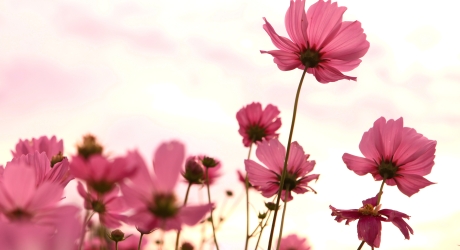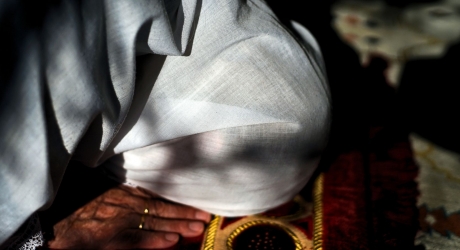The burqa is not a part of Islam but an element of Muslim culture and the distinction is important, says Farida Khanam
These days the burqa, or purdah, is in the news. It is generally looked upon as an integral part of Islam, but this is not so. In reality, the burqa is a part of Muslim culture and not a part of Islamic teaching. There is a great difference between Muslims and Islam. If it is claimed that the burqa, or purdah, is a part of Muslim culture, then I would say yes to that, but if it is claimed that the wearing of it is a part of Quranic teaching, then I would say no. The source of Islam is the Quran rather than Muslim culture. Muslim culture is a social phenomenon, while the Quran is the Book of God as revealed to the Prophet of Islam.
According to linguistic history, the word 'burqa' was in use in Arabia before the advent of Islam in the first quarter of the seventh century. At that time the word 'burqa' meant a piece of clothing that was used as a protection, especially in winters. The well-known Arabic dictionary Lisan al-Arab gives us two examples of its use during the pre-Islamic period: the first, as a cover for animals during the winter season and the second, as a covering chaadar, like a shawl for village women. Although the word 'burqa' existed in the Arabic vocabulary at that time, the Quran did not use the word 'burqa' for women's purdah.
History shows that the present veil or burqa first came into vogue in Persia. When Islam entered Persia, a complete civilisation was already in existence there. Many things were introduced into Islamic culture from the Persian culture. For instance, the word Khuda instead of Allah, the word Namaz instead of Salat. Similarly under the influence of Iranian culture burqa was adopted by Muslims. Gradually it was Islamised and became a part of Muslim culture.
At present Muslims use the term 'hijab' as equivalent to 'burqa' but the word 'hijab' is likewise not used in the Quran in this sense. 'Hijab' literally means curtain. 'Hijab' is used in the Quran seven times, but not in the sense that is prevalent among the Muslims today, that is, it is used in its literal sense of 'curtain'.
Regarding women's purdah, two words have been used in the Quran: jilbab (33:59) and khimar (24:31). But again these words are not used in their present connotation. It is a fact that both words have a similar meaning, that is, chaadar or duppatta, that covers the body of a woman and not her face. So it is very clear that the present 'burqa' or 'hijab' are not Quranic terms; both are part of Muslim culture and not part of Quranic commandments.
According to the Hanafi and Maaliki School of fiqh, three parts of a woman are exempted from satr (body covering ). These three are wajh, kaffain, and qadmain. That is, face, hands and feet. According to the Shariah, women are required to cover their body with clothing which is not tight fitting and not meant to attract others. (Chapter 24, verse 31, Tafsir Usmani)
It is noteworthy that the well-known Arab scholar, Sheikh Muhammad Naasiruddin al-Albani , clearly endorses the above-mentioned position of the Shariah in his book on this subject, Hijab al-Mar'ah al-Muslimah fil Kitab was-Sunnah (The Veil of a Muslim Woman). He goes on to say that it is clear from the Quran, the Hadith and the practice of the companions and the tabiun (companions of the Prophet's companions) that, whenever a woman steps out of her home, it is incumbent upon her to cover herself completely so as not to show any part of her body except the face and the hands.
The religion of Islam focuses on spirit rather than on form. It lays emphasis on pious thinking and value-based character. According to Islam, Muslims must purify themselves in terms of ethics. Muslim women must develop themselves in terms of spirituality; they must develop their own feminine personality rather than imitate men and must play a constructive role in society rather than become objects of entertainment.
During the Prophet's time, Muslim women were active in different fields, such as agriculture, horticulture and social work. But at the same time, they constantly preserved their feminine character. In the early history of Islam there are many such incidents which show that a woman has equal freedom as that of man. In this respect there is no difference between the two. A woman enjoys the same freedom as a man in Islam . Islamic literature mentions some pious women who have played a highly creative role in their society, like Hajira , the wife of the Prophet Abraham; Mariam, the mother of Jesus Christ; Khadija, the wife of the Prophet of Islam; Aishah, the wife of the Prophet of Islam. These women, accepted as models in the society of believers, are good examples for the women of today.
In conclusion, I would like to add two relevant references : One from the Quran and the second from the Hadith (the sayings of the Prophet). The Quran refers to men and women in these words: "You are members one of another" (3:195). This means that men and women, although created different in gender, are complementary to each other. Let us take the other reference. The Prophet of Islam said: "Men and women are two equal halves of a single unit." (Musnad Ahmad) This is the best expression of gender equality.
To understand the prevalence of Hijab in Muslim society in the present times it is necessary to keep in mind that there is a difference between Islam and Muslims. Islam is a name of an ideology while Muslims are a community which has its own culture, which keeps changing owing to various circumstances.
In such a situation Muslim tradition will be judged in the light of the original teachings of Islam instead of regarding this culture as Islam itself.








